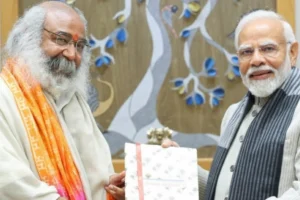
India - China
India- China Relations : Outside Affairs In a Wednesday speech on Idia’s relations with China, Minister S. Jaishankar stated that attempts to unilaterally alter the Line of Actual Control (LAC) will not be permitted. He claimed that relations with China are not “normal” while speaking to the parliament at its winter session “which, according to him, is clear from recent years.
In terms of diplomacy, we have made it clear to the Chinese that we won’t accept any efforts to unilaterally alter LAC. Our relationship isn’t normal if they keep doing that and developing forces that pose serious security concerns near the border, as has been seen over the past few years “The minister made a statement in Rajya Sabha, according to news agency ANI.
India- China Relations : Jaishankar also stated during the session that India’s diplomacy continues at a rapid clip despite the nation’s rising global interests, footprint, and relationships.
China recently expressed its opposition to the joint Indo-US military exercises taking place close to the LAC, claiming that they violate the spirit of the two border agreements that Beijing and New Delhi signed.
In Uttarakhand, around 100 km from the Line of Actual Control (LAC), the 18th iteration of the India-US joint military exercise “Yudh Abhyas” is currently taking place, according to a PTI report. Early this month, the roughly two-week exercise got underway. It seeks to improve coordination and knowledge transfer between the two armies for peacekeeping and disaster relief operations.
Jaishankar had stated in November that in order for India’s relationship with China to be normal, there must be peace in the border regions and no ambiguity in New Delhi’s signals to that nation.
India China disengagement
On September 8, the Indian and Chinese military stated that they had begun the disengagement process from the PP-15, marking a significant advancement in the delayed effort to withdraw soldiers from the last remaining flashpoints in the area.
The two armies had stated that the disengagement in the Gogra-Hotsprings region was a result of the 16th round of high-level military negotiations in July when they announced the start of the procedure on September 8.
India has repeatedly argued that sustaining peace and calm along the LAC was essential for the overall growth of bilateral relations. The standoff at the eastern Ladakh border started on May 5, 2020, after a bloody altercation in the Pangong lake regions. By hurriedly bringing in tens of thousands of soldiers and heavy equipment, both sides gradually increased their deployment.
The two parties concluded the disengagement process last year on the north and south banks of the Pangong lake as well as in the Gogra region as a result of numerous military and diplomatic discussions. The Pangong Lake region was disengaged in February of last year, and Patrolling Point 17 (A) in Gogra saw the removal of personnel and equipment in August of that same year.
Also Read : Border Conflict: Sharad Pawar Says It’s Time to Stand Up; K’taka Activists Riot
To read more such news, download Bharat Express news apps


















